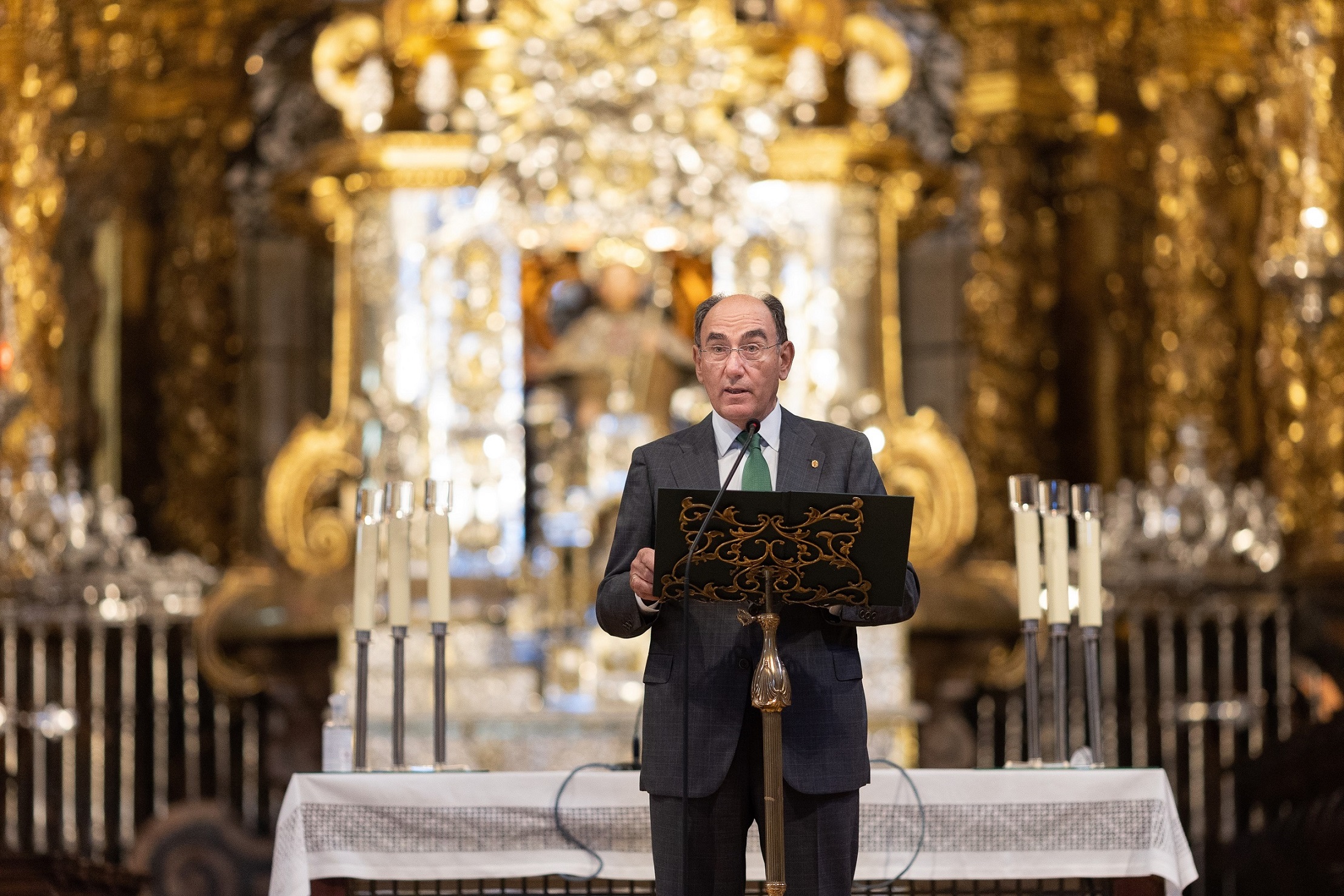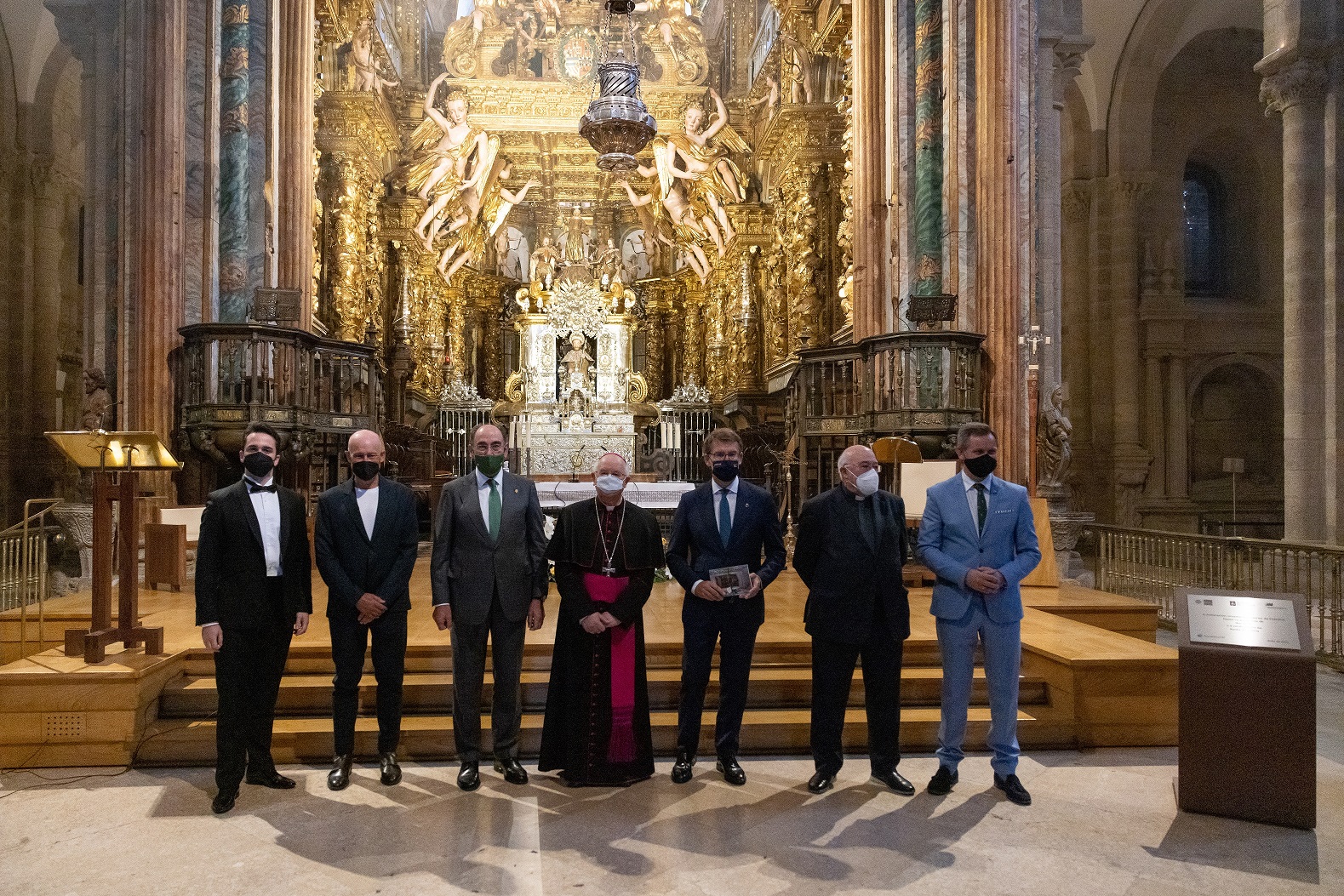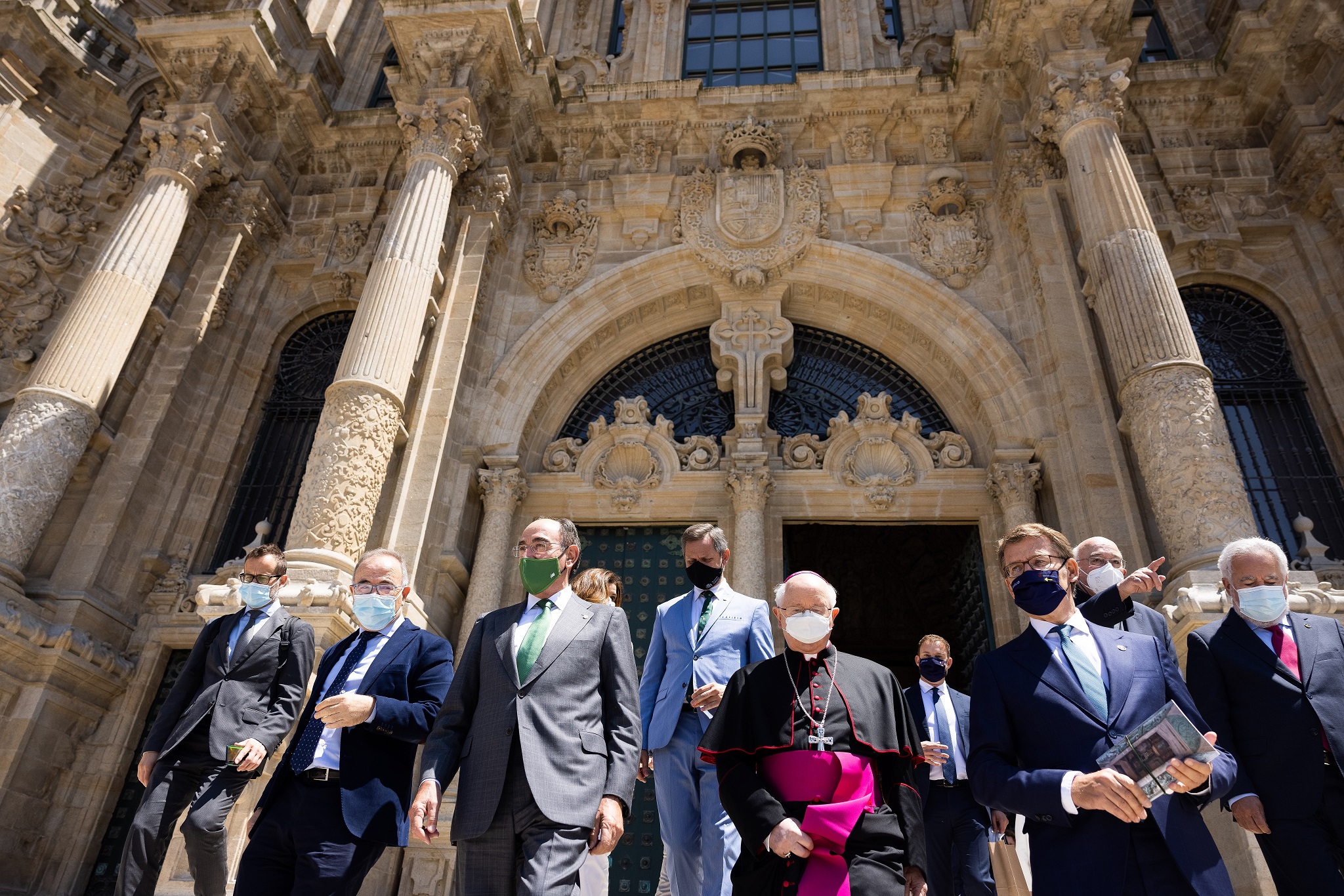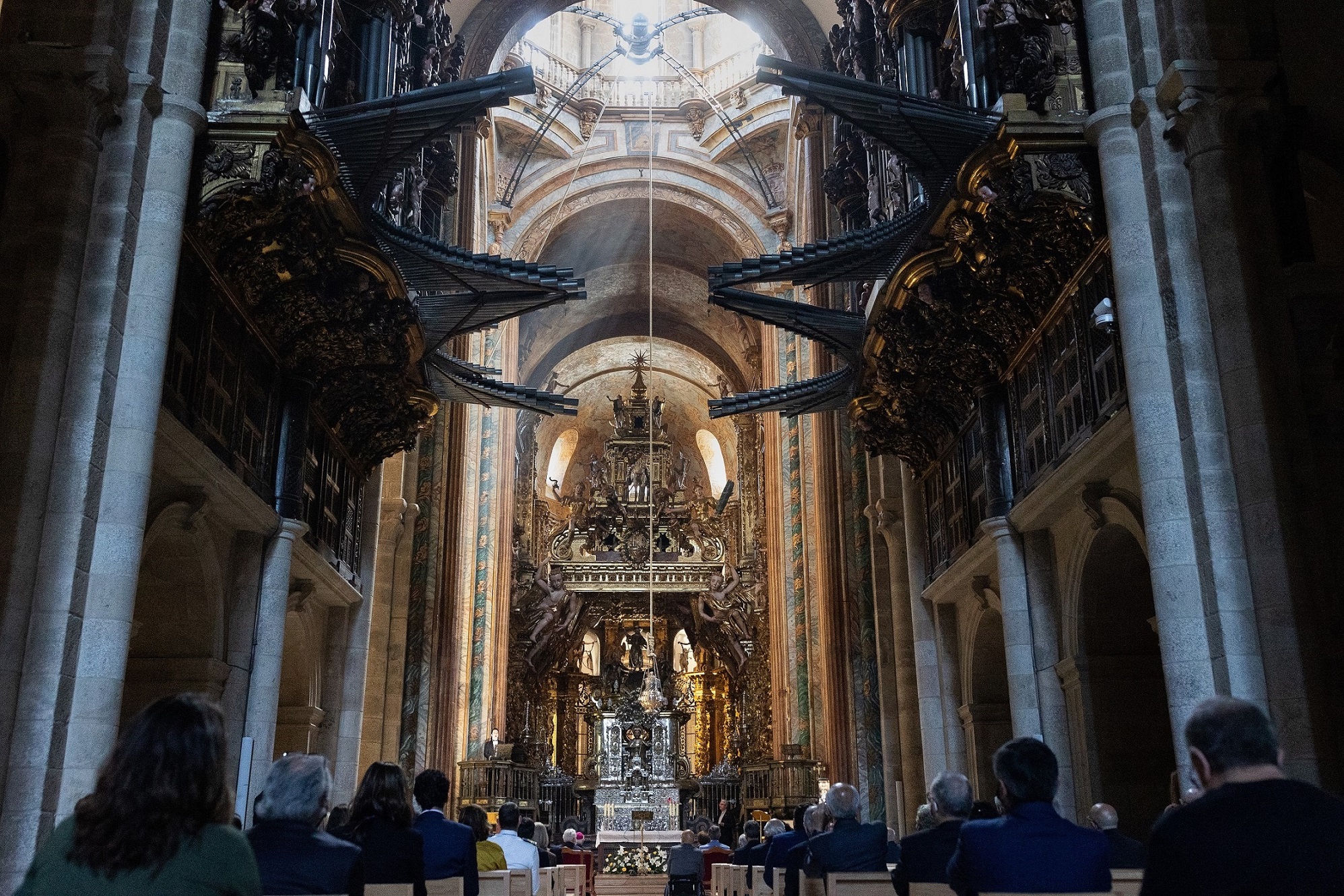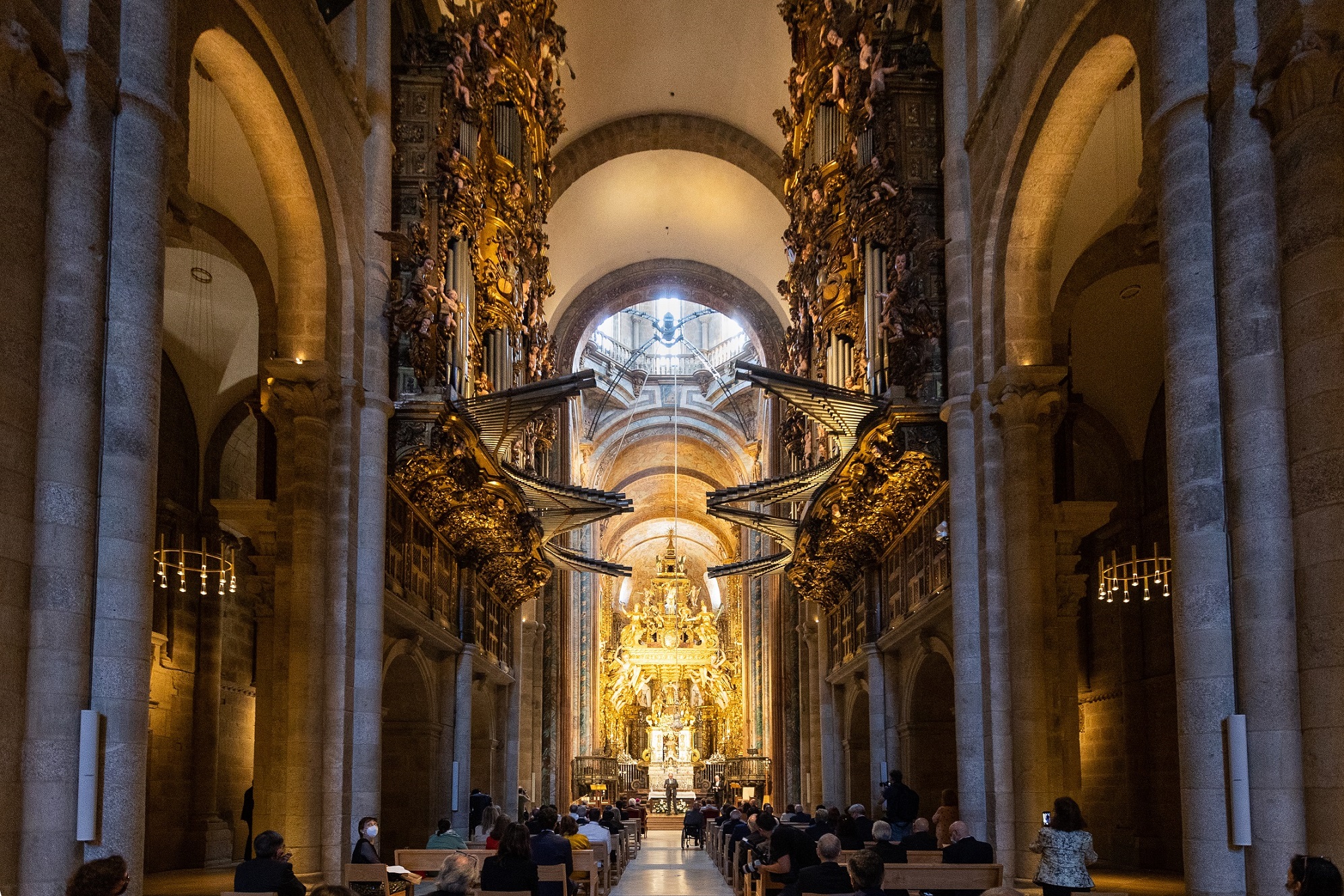- In his speech, Ignacio Galán highlighted Santiago as the nerve center of artistic and cultural movements since the early Middle Ages. “We are carrying out this action in the most universal of Galicia’s monuments, with the same enthusiasm and commitment with which we are committed to this land, which is ours, promoting energy transition, industrial development and job creation”.
- The action carried out by the company includes the installation of 700 luminaires -which improve energy efficiency by 61% and avoid the emission of 6.7 t of CO2/year- and 36 lamps designed exclusively, inspired by the old votive lamps.
Iberdrola has been committed to Galicia for decades: it is the leading renewable energy company in the region – it operates more than 2,000 MW of green power – and has made this community an industrial benchmark for offshore wind power, with the participation of local suppliers in the projects it develops around the world.
The Cathedral of Santiago de Compostela has unveiled its interior lighting today, following the culmination of a project developed over the last two years by Iberdrola – through its Foundation in Spain – and the Cathedral Chapter, with the aim of revitalizing the temple in the Jubilee Year of Compostela and providing it with a light that respects both the history and the current reality of the monument.
The inauguration ceremony of the new lighting, held this afternoon, was attended by the president of the Xunta de Galicia, Alberto Núñez Feijóo; the president of Iberdrola, Ignacio Galán; the archbishop of Santiago de Compostela, Julián Barrio Barrio; the dean president of the Cathedral, José Fernández Lago; and the canon director of the Cathedral Foundation, Daniel C. Lorenzo Santos, among other authorities.
In his speech, Ignacio Galán emphasized that it is “a real honor for Iberdrola to have contributed, once again, to the conservation of this temple, which we have carried out with the same emotion as so many thousands of devotees when they arrive in Santiago, the destination of all the major pilgrimage routes of Christianity and the nerve center of so many artistic and cultural movements since the early Middle Ages”. He also added that “we are carrying out this action in the most universal of Galicia’s monuments, with the same enthusiasm and the same commitment with which we are committed to this land, which is ours, promoting energy transition, industrial development and the generation of sustainable and quality employment”.
The interior lighting of Santiago is part of Iberdrola’s Illuminations Program and is in addition to other collaborations developed in the Cathedral of Santiago since 2004 by the company, with the lighting of the Holy Door, or the total renovation of the lighting in 2015, along with the control and electrical installations, of the Main Chapel and the Sepulchre of the Apostle.
Combining the history and the current reality of the temple.
The interior lighting works of the Cathedral of Santiago have included the installation of 700 luminaires, with a total power of 15.8 kW, which allow a renewed lighting of different elements of the temple, such as the naves, the transept, the ambulatory, the triforium and the Pórtico de la Gloria. With this action, energy efficiency has been improved by 61% with respect to the previous lighting, and the emission into the atmosphere of 6.7 tons of CO2 per year will be avoided.
Among other elements, the project has exclusively designed 36 new lamps inspired by the old votive lamps of the Cathedral which, suspended in the central nave and transepts, recover the lighting of the time when the temple was illuminated with candles. Equipped with the latest lighting technology, they have 12 LED emitters each and are powered directly from the cables that anchor them to the ceiling and keep them suspended.
The installation of the new lamps, managed from a control system together with other lighting components, helps to create different scenes depending on the time of visit: without worship, with ordinary worship or solemn worship.
After several years of studies by experts and in coordination with the rest of the restoration work being carried out in the Cathedral, the natural light of the basilica during the day has been evaluated to design a scheme of artificial light that is superimposed as a different visual layer, avoiding the classic lighting of vaults.
The light in the Cathedral has traditionally been expressed on two different levels. On the one hand, artificial light, on a plane more or less close to the ground for reasons of available technology and maintenance, with warm color temperatures and deployed through solutions such as candle lanterns, candlesticks, candle holders, votive lamps, etc. On the other hand, natural light has been the protagonist of the higher sections. An abundant light and cold color temperatures.
The current project relies on this duality to generate an attractive visual experience for visitors and worshippers. The sequence of suspended lamps in contrast to the natural light provided by the rose windows and the dome allows for a narrative that respects both the history and the current reality of the church.
Energy transition, industrial development and sustainable, quality employment.
Iberdrola has been operating for decades in Galicia, a region where it has consolidated its position as the leading renewable energy company, managing more than 2,000 MW of green power, and where it continues to promote the energy transition and, with it, industrial development and the generation of sustainable and quality employment.
The socio-economic impact of its activity in the region exceeds 400 million euros per year between investments, purchases, salaries and tax contributions.
The company’s commitment to future technologies has also made Galicia an industrial benchmark in offshore wind power, with the participation of local suppliers in the projects it is developing around the world. This is the case of the Wikinger offshore wind farm, which Iberdrola operates in the German Baltic Sea, whose foundations were manufactured in Fene/Navantia; and, more recently, the contracts for Saint Brieuc, which will contribute to the construction of this offshore wind farm in Brittany, France; and the agreements for the manufacture of components for future offshore wind farms.
Enhancing the value of historical and artistic heritage in Spain.
Through its Foundation in Spain, Iberdrola dedicates a significant part of its actions to promoting the social value of culture and the enhancement of the country’s artistic wealth.
Since 2011, and with an investment of 12.6 million euros, it has been developing two main lines of work: the Restorations Program, for the conservation of pictorial and artistic heritage; and the Illuminations Program, focused on the care, conservation and enhancement of historical-artistic wealth.
The main objective of the Illuminations Program is to develop interventions in unique buildings to install or improve their interior and/or exterior lighting systems in order to contribute to the enhancement of the historical and artistic heritage.
Since 2011, the actions carried out in this area have led to the improvement of more than 40 monuments in Spain, including the historic Roman Bridge of Alcántara, in Cáceres; the façade of the Congress of Deputies, in Madrid; the Cathedral of Ávila, and the interior of the New Cathedral of Salamanca. Another unique initiative is the Illuminating the Prado program, a comprehensive lighting project for the Prado Museum using LED technology that is a pioneer and a benchmark in Europe.

